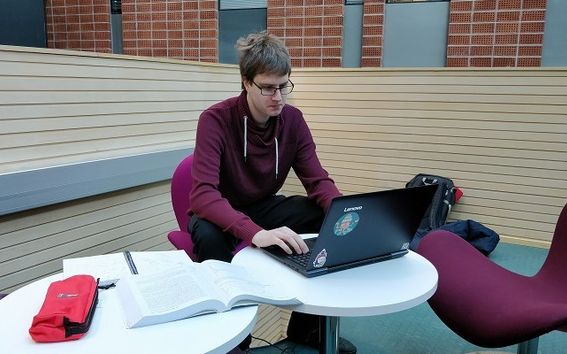Parallel computing to assist in the control and quality control of steel furnaces

Before a steel slab can been shaped it must be heated in a furnace, which is operated with a computer. The control of the furnace is developed with computer modelling of heat transfer. In order for a program to function as part of the control, it must be able to compute result with adequate speed. One method for speeding up computation is to divide the computation onto several parallel processor cores. In this case, even computationally large problems can be solved in small parts. The implementation of parallel computing makes it possible to utilise the computation performance of the processor more comprehensively. In recent years, the use of graphics processing units to increase the efficiency of computer models has increased.
In his Master's thesis titled "Efficient parallel implementation of a transient heat transfer model" Christian Westerlund researched a heat transfer model, which computes the heat distribution of lengths of steel in the furnace in real-time. In the scope of his research, Westerlund has examined the heat transfers model's algorithms and aimed to implement parallel computation as efficiently as possible. The work has comprised the optimisation of existing implementation and the implementation of a parallel model for the display card. The CUDA parallel computing platform was utilised as a tool for this work. As a result of the research, computation was sped up, the final outcome being up to six times as fast as the original.
Combination of different branches of science led to concrete results
“The results of this Master's thesis are concrete and important, as there is a need for the sped up model in the real-time control and optimisation of a steel furnaces. The results may prove useful in quality control, and they will promote the productivity of the steel industry. Our objective is to possibly utilise the model at a steel works as early as this year,” says Seppo Louhenkilpi from Aalto University's School of Chemical Engineering.
Aalto University's studies make it possible for students to combine different branches of science. Christian Westerlund has successfully taken advantage of this. His Master's thesis, which will be approved in the Degree Programme Committee meeting on 27 February 2018, has required extensive, interdisciplinary expertise and its application in practice.
“I studied at the Department of Chemical and Metallurgical Engineering with a major in Functional Materials. I selected my minor subject studies from those offered at the Department of Computer Science, which made it possible for me to take on this thesis topic. I felt that in particular the Programming Parallel Computers course, which focused on parallel computing, was of benefit. Multidisciplinary studies offer great advantages in working life and in problem solving.”
More information:
Christian Westerlund,
[email protected]
Professor Ari Jokilaakso
ari.jokilaakso@aalto
Assistant Professor Jukka Suomela
[email protected]
Senior Scientist Seppo Louhenkilpi
[email protected]
- Published:
- Updated:
Read more news

Get to know us: Associate Professor Maria Sammalkorpi
Sammalkorpi received her doctorate from Helsinki University of Technology 2004. After her defence, she has worked as a researcher at the Universities of Princeton, Yale and Aalto.
Aalto computer scientists in ICML 2024
Computer scientists in ICML 2024
Getting bacteria into line
Physicists use magnetic fields to manipulate bacterial behaviour